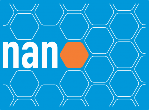Banca de DEFESA: JOANA DE BARROS SACRAMENTO
Uma banca de DEFESA de MESTRADO foi cadastrada pelo programa.DISCENTE : JOANA DE BARROS SACRAMENTO
DATA : 31/05/2022
HORA: 14:00
LOCAL: REmoto
TÍTULO:
Hybrid flexible conductive nanocomposites based on block copolymers and carbon nanotubes
PÁGINAS: 70
GRANDE ÁREA: Engenharias
ÁREA: Engenharia de Materiais e Metalúrgica
SUBÁREA: Materiais Não-Metálicos
ESPECIALIDADE: Polímeros, Aplicações
RESUMO:
The advance in the studies of smart materials, which present a mechanical response as a function of an electrical stimulus, enables the development of the application of electroactive polymers (EAP). Among the classes of EAPs, dielectric elastomers stand out, where the presence of a flexible electrode with good electrical conductivity and excellent flexibility are essential. These flexible electrodes can be made from an elastomeric base and conductive dispersion phase. Among the conductive nanomaterials, carbon nanotubes (CNTs) stand out for high electrical and thermal conductivity and low percolation threshold. In addition, they have different morphology, that can be multiple walls (MW) or single one (SW), making the combined use of different CNTs interesting. Thus, the purpose of this work was the development of hybrid nanocomposites with different CNTs based on a block copolymer gel (SEBS) with the addition of a mineral oil (OM) and a hydrocarbon resin (RHC). The effects of the addition of RHC on the electrical conductivity of the nanocomposites were studied, as well as the concentration of each type of CNT in the pure and hybrid materials. The samples were characterized by morphological, dielectric, rheological and mechanical techniques. As main results, it was observed the addition of resin in the gels influenced the percolation threshold of carbon nanotubes, with a difference of approximately 10-6 S/m for MWCNT and 10-2 S/m for SWCNT. As for the hybrid nanocomposites, they showed very promising results, with a potential synergistic effect between the two types of nanotubes. The sample with 1.5% CNT, containing 1.0% MW and 0.5% SW, presented an electrical conductivity above of the material with the highest value so far - sample with 1.5% pure SW. Another very advantageous result of this hybrid sample is that its compressive modulus did not undergo considerable variation when compared to the pure gel, a very important characteristic for the application that aims at a flexible material. Finally, there was also a good correlation between electrical percolation and rheological percolation.
MEMBROS DA BANCA:
Presidente - Interno ao Programa - 1761120 - DANILO JUSTINO CARASTAN
Membro Titular - Examinador(a) Externo ao Programa - 1730526 - SUEL ERIC VIDOTTI
Membro Titular - Examinador(a) Externo à Instituição - GUILHERMINO JOSÉ MACÊDO FECHINE - UPM
Membro Suplente - Examinador(a) Externo ao Programa - 1850090 - ANNE CRISTINE CHINELLATO
Membro Suplente - Examinador(a) Externo à Instituição - RICARDO JORGE ESPANHOL ANDRADE - UPM




